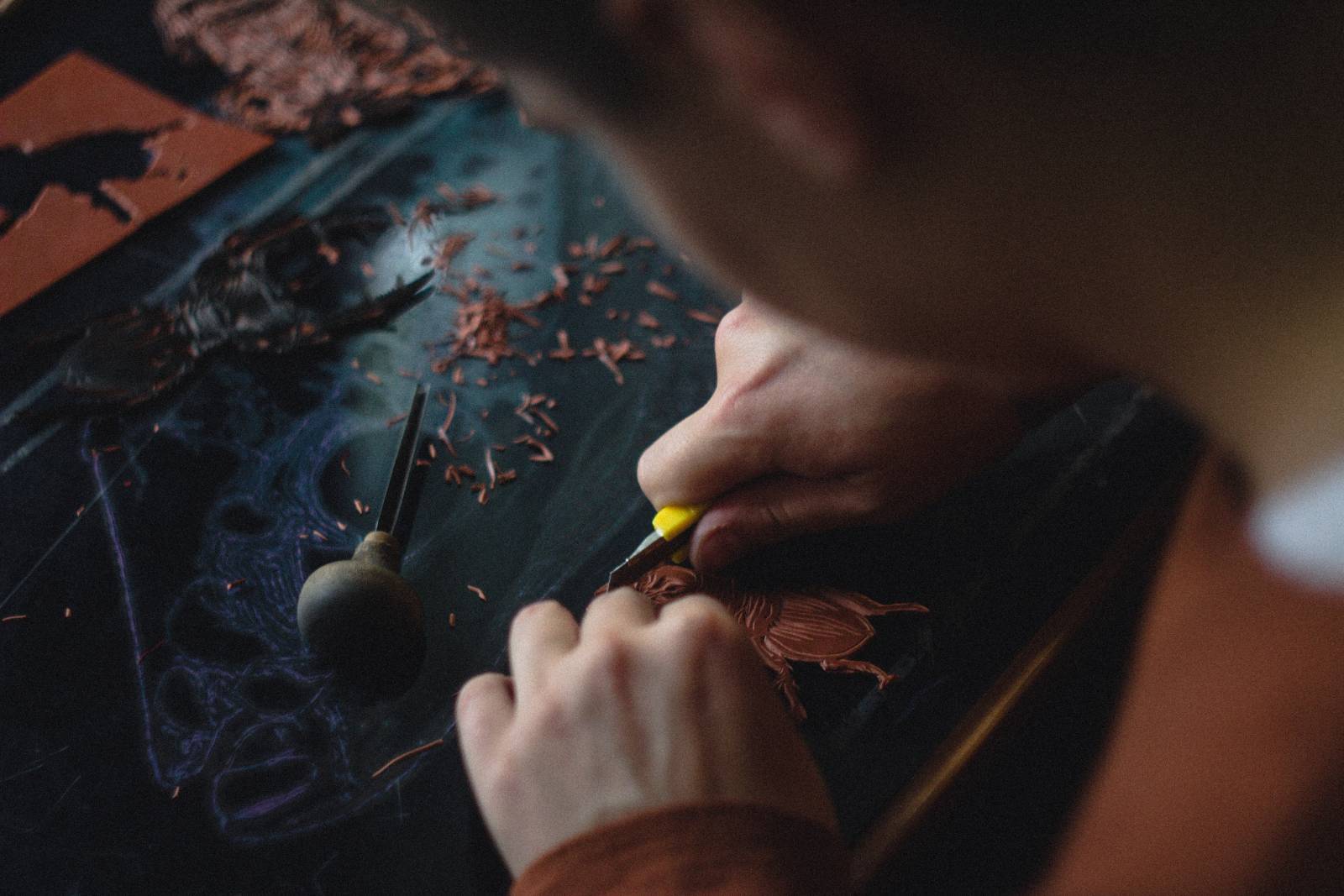Lino printing, also known as linocut, is a printmaking technique that involves carving a design into a sheet of linoleum, applying ink to the raised areas, and then pressing it onto a sheet of paper or other materials. The resultant print is a reflection of the artist’s skill and imagination. However, one aspect of the process that is often overlooked is the lino itself.
While traditional art lino sheets are the go-to option for most artists, it’s worth considering an alternative resource: old lino flooring. This article explores the possibility of reusing old lino flooring for printmaking and compares its effectiveness with that of purpose-made art lino.
Table of Contents
The Lino Printmaking Process with Old Lino Flooring
Before jumping into the comparison, let’s dive into the process of using old lino flooring for printmaking. The first step, of course, is sourcing the material. Look out for old lino flooring, perhaps leftover from a renovation project, or salvaged from a recycling centre.
After sourcing, the next steps would include:
- Cleaning: Old lino flooring must be thoroughly cleaned to remove any dust, dirt, or any other particles which may interfere with the printmaking process.
- Preparation: The lino should be cut down to the desired size for your print. If the lino flooring is thicker than typical art lino, consider carefully whether this will impact your design or your ability to make clean cuts.
- Designing and Carving: Once your lino is clean and of the appropriate size, your design can be drawn onto the lino and then carved out using specialist tools. This step is similar to what one would do with traditional art lino.
- Inking and Printing: The carved lino is then inked, and a sheet of paper is pressed onto it to create the final print. Again, this process is the same as with art lino.
Comparing Reused Old Lino to Art Lino
When it comes to choosing between reused old lino and purpose-made art lino, several factors come into play:
1. Availability and Cost
If you have access to old lino flooring, it can be an incredibly cost-effective alternative to art lino. Art lino, while not overly expensive, does carry a cost, and those costs can add up for artists producing a high volume of work.
2. Environmental Impact
Reusing old lino flooring is a more sustainable option as it gives new life to a material that might otherwise end up in landfill. This re-purposing can contribute towards a more sustainable practice for artists.
3. Texture
One of the key differences between old lino flooring and art lino is the texture. The texture of the lino can significantly affect the final print. For example, art lino is typically smooth and allows for clean, precise carvings. However, old lino flooring might have a textured surface due to its original purpose. This texture can add a unique character to the final print, but it may also limit the precision of the carving and therefore the detail achievable in the final print.
4. Ease of Use
Art lino is specifically designed to be easy to carve, making it an accessible medium for beginners and those with less strength or dexterity. Conversely, old lino flooring may be thicker and harder, making it more difficult to carve and potentially more challenging for less experienced printmakers.
Exploring Lino Printing with Art Kits
If you’re new to lino printing or want to experiment with different materials without the hassle of sourcing them individually, consider investing in a lino printing art kit. These comprehensive packages usually include everything you need to get started, such as:
- Lino sheets: These kits typically come with art lino sheets, perfect for beginners due to their ease of carving.
- Carving tools: To carve your design into the lino, you will need a set of carving tools, which usually include a variety of shapes and sizes for different effects.
- Ink: A good quality printing ink is essential for creating clear, vibrant prints. Kits often include one or more colours to get you started.
- Roller: A roller is used to apply the ink evenly across your carved lino before printing.
- Printing paper: Some kits even include paper suitable for lino printing, allowing you to start creating right away.
Art kits are a great starting point for those new to lino printing, providing you with the essential tools and materials. They also give a feel of working with art lino, which can serve as a point of comparison should you decide to venture into using old lino flooring for your printmaking.
However, remember that while these kits are convenient, they might not provide the unique character that old, repurposed lino flooring can bring to your work. As always in art, experimentation is key, so don’t hesitate to step out of the box (or the art kit, in this case) and try something new.
Check out some art kits https://docs.google.com/document/d/15fMxLuWsTI3AU1L_iWINWQyaiUxxQf9tY0Ok-peocus/edit?usp=sharing sold by Hickman Design.
Conclusion
In conclusion, while there are pros and cons to both, the choice between reused old lino flooring and art lino often comes down to personal preference, availability, and the specific requirements of your project. It’s certainly worth experimenting with both to discover which best suits your needs and artistic style. Remember, the beauty of art lies in its versatility and the freedom it offers to create, innovate, and recycle.

